Wethersfield: The finest example of a classically inspired 20th-century American garden
The garden at Wethersfield, in the Hudson Valley, is at last being given the attention it deserves. Jane Garmey recounts its extraordinary story, with photographs by Pieter Estersohn.
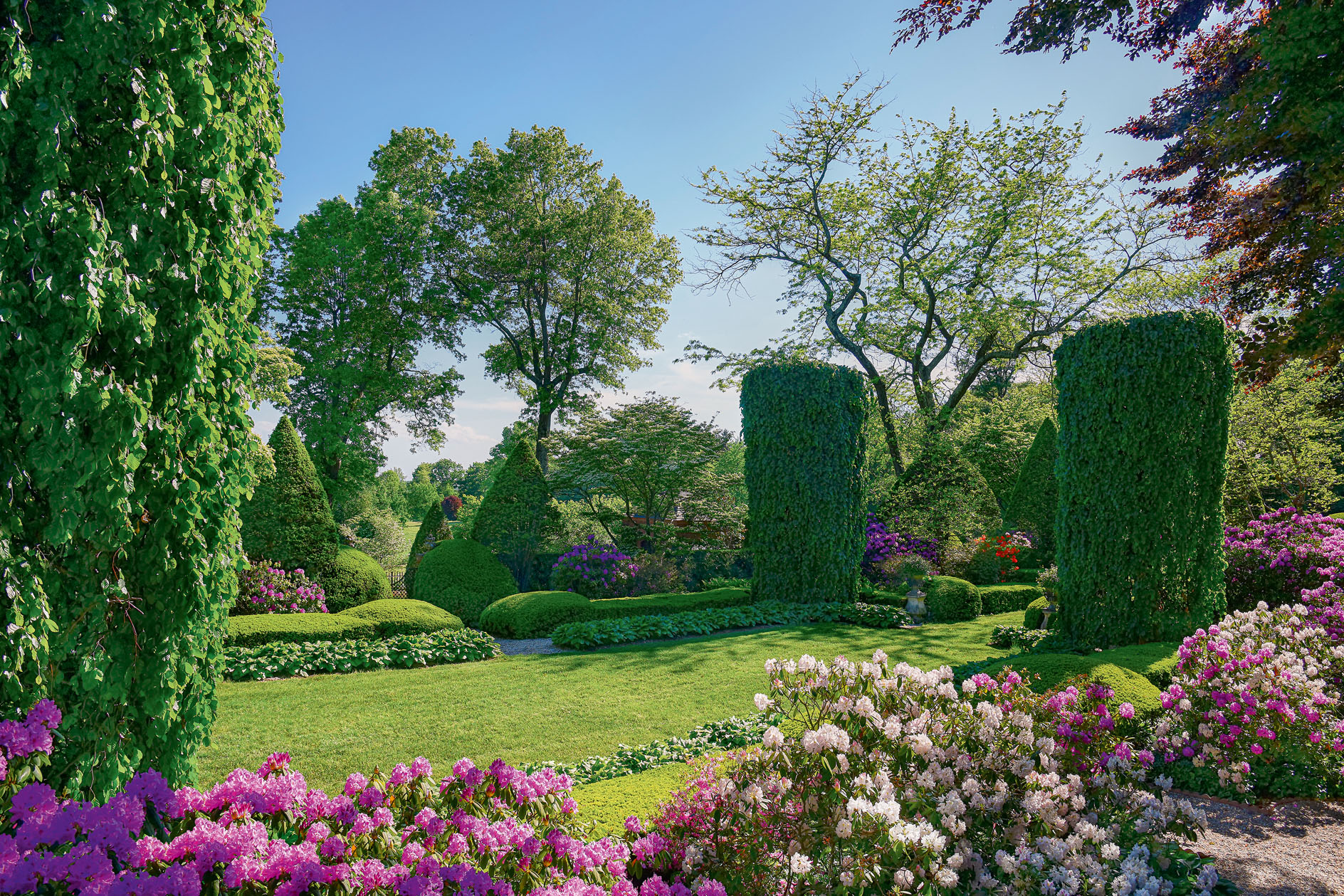

Creating a classically inspired garden with belvedere, clipped hedge allées, elliptical pool, urns and statuary in the aftermath of the Second World War might seem an unlikely endeavour. But it was not one to daunt Chauncey Devereux Stillman, the grandson of one of America’s richest bankers.
A keen equestrian who rode with the Millbrook Hunt, Stillman was familiar with Dutchess County, two hours north of New York City. In 1937, aged 32, he bought what he described as a ‘rundown farm’ on 400 acres of open farmland in nearby Amenia, later adding another 700 acres. He picked a magnificent site with spectacular views of the Taconic Range, the Berkshires and the Catskills and named it Wethersfield after the Connecticut village where his ancestors had first settled on arriving in America.
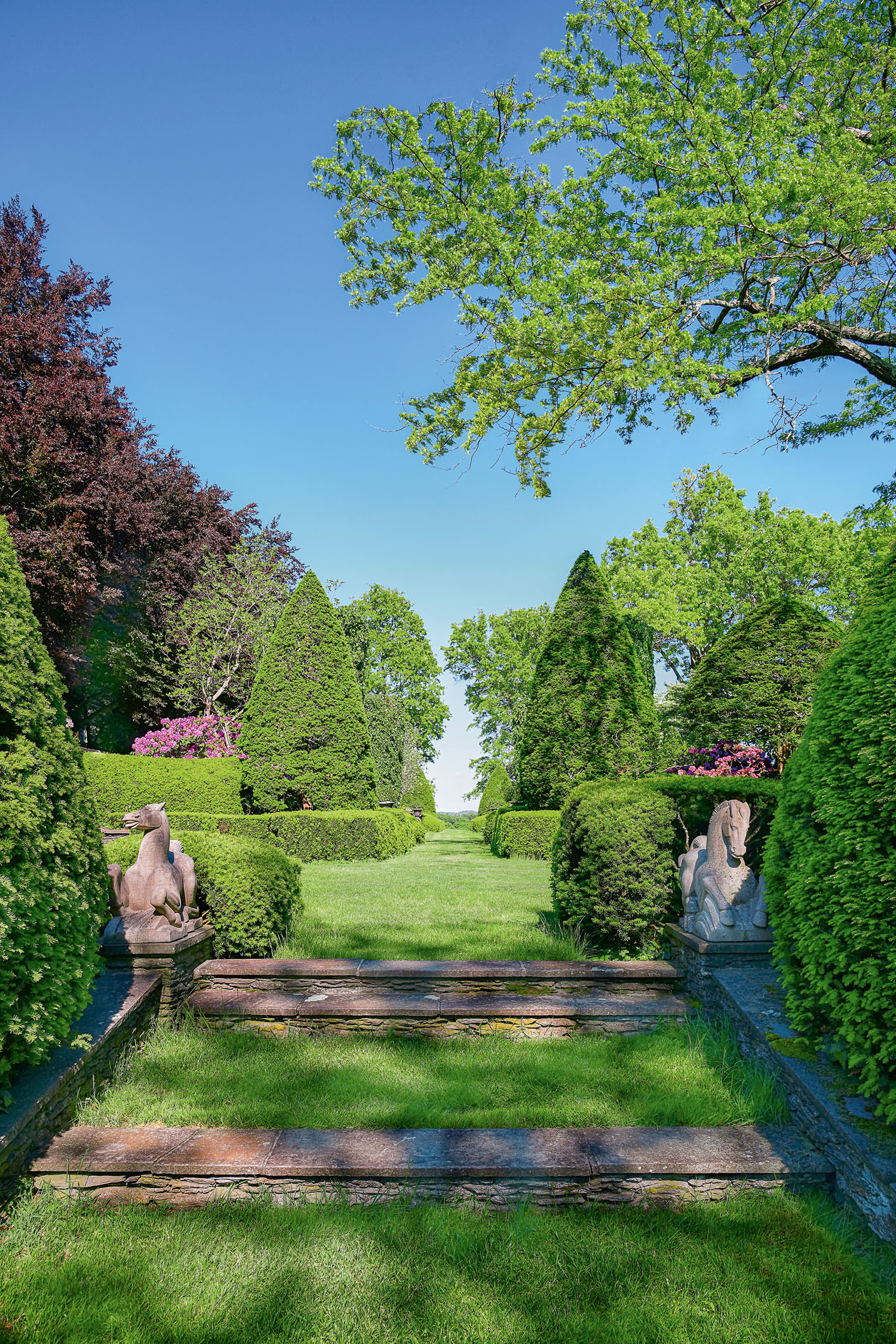
Two years later, the newly married Stillman commissioned Bancel LaFarge, an established New York architect, to design a brick and brownstone Georgian Revival house and Bryan J. Lynch, a well-connected landscape architect, to create an enclosed garden at the back of the house. Lynch’s design was clearly influenced by the Arts-and-Crafts garden style pioneered in England by Lutyens and Jekyll, which was enthusiastically adopted by American garden designers.
Large beds were filled with perennials and annuals, framing a circular lawn that was bordered by a long flagstone terrace shaded by a dense arbour of grapes and trumpet vine and intersected by a rill. A pleached tunnel of amur maples, later replaced by beech, enclosed the other side of the lawn and three radial stone steps at the far end of the garden led to a raised secluded parterre.
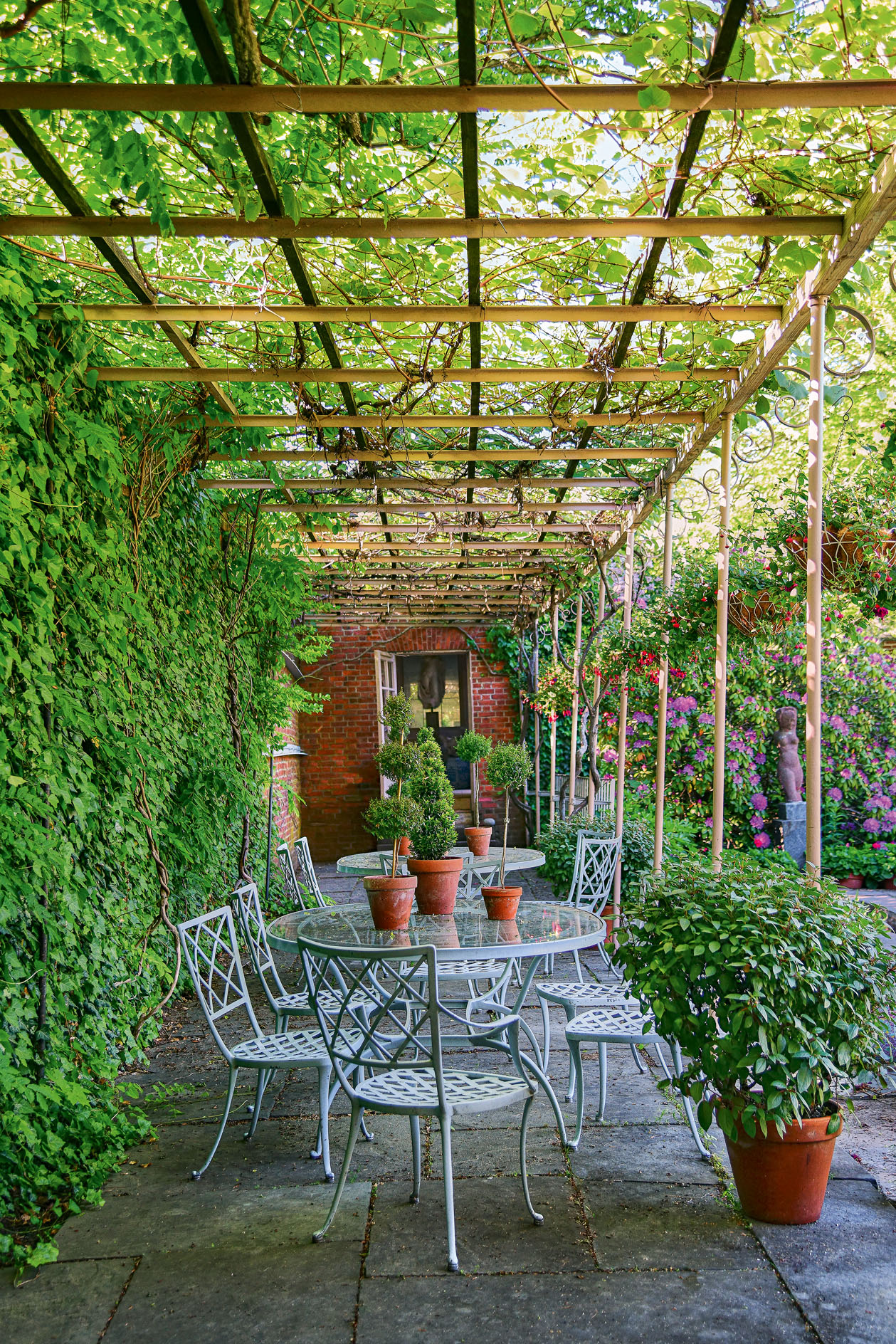
When the war intervened, the Inner Garden (as it is now called) was temporarily turned into a vegetable-producing Victory Garden. It was not until 1947 that Stillman, by then divorced and the father of two daughters, decided to make improvements. At Lynch’s recommendation, he hired Evelyn Poehler, a little-known landscape architect in her early thirties. If it is surprising he did not commission someone more established, it proved to be a fortuitous choice. Poehler and Stillman worked together for almost four decades — he commissioning and she designing a classically inspired garden in a superb setting.
Poehler’s energies were first directed to improving the Inner Garden and three smaller gardens next to the house. In 1955, at Stillman’s request, she designed an elliptical reflecting pool (originally for swimming), which she placed in an oval-shaped lawn framed by clipped hedges and monumental balls of yew. The approach to the pool, sited to the east of the Inner Garden, is through a pair of handsome wrought-iron gates, guarded by two marble cherubs that signal the transition from the conventional to the classical.
Within two years, Poehler had completed a plan for an elaborate formal garden in three terraced sections, continuing east from the pool and taking its inspiration from 17th-century Italy. Today, this series of connected garden rooms and recessed vistas, set on an east-west axis, occupies the central terrace and is planted with specimen trees, deciduous shrubs and symmetrical topiary.
Sign up for the Country Life Newsletter
Exquisite houses, the beauty of Nature, and how to get the most from your life, straight to your inbox.
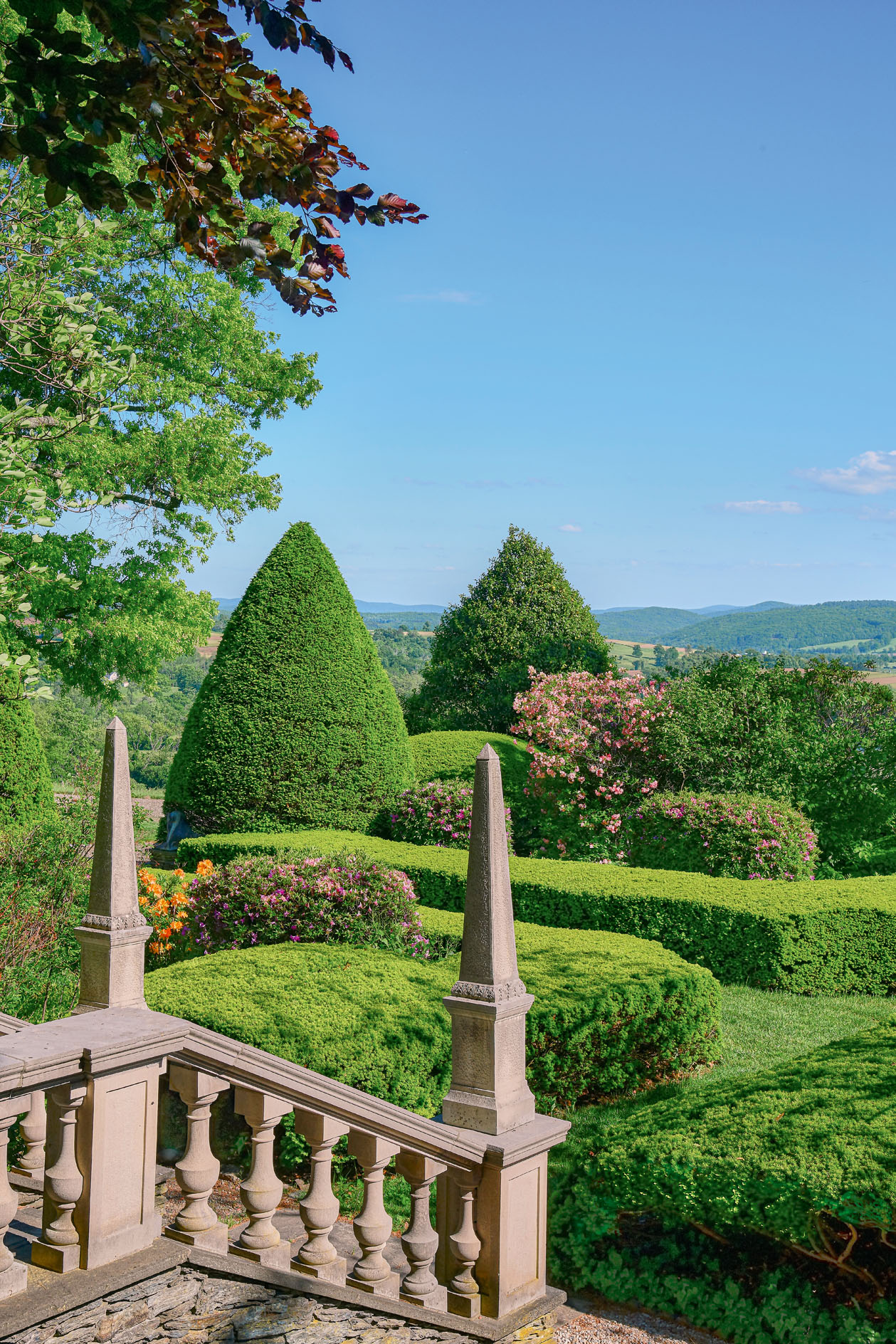
Four columnar-shaped weeping beeches add drama to the largest of these rooms, as yew and arbor-vitae hedging throughout the garden is softened by rhododendrons, kousa dogwood, azaleas, lilacs and mountain laurel. The colour palette is deliberately restricted and marble, limestone and lead garden statuary, added over the years, frame the entrance to each room. The garden traverses a hillside, so the upper and middle terraces are divided by a retaining wall capped with a stone balustrade and steps descend from the central level to a lower terrace, where a cutting garden filled with annuals is partly hidden from view.
The garden is intersected by two main secondary north-south axes. The most dramatic is a 190ft grass allée bordered by 20ft-high arbor vitae that rise steeply behind the reflecting pool to end in a distant ellipse that screens a Naiad fountain rising out of a granite water basin. The second axis is a flight of steps, framed by a pair of stone obelisks, that climbs from the north terrace to arrive at the belvedere, a circular limestone tempietto, designed in 1965 by the architect W. Dean Brown. From here, one surveys the garden below and the countryside beyond.
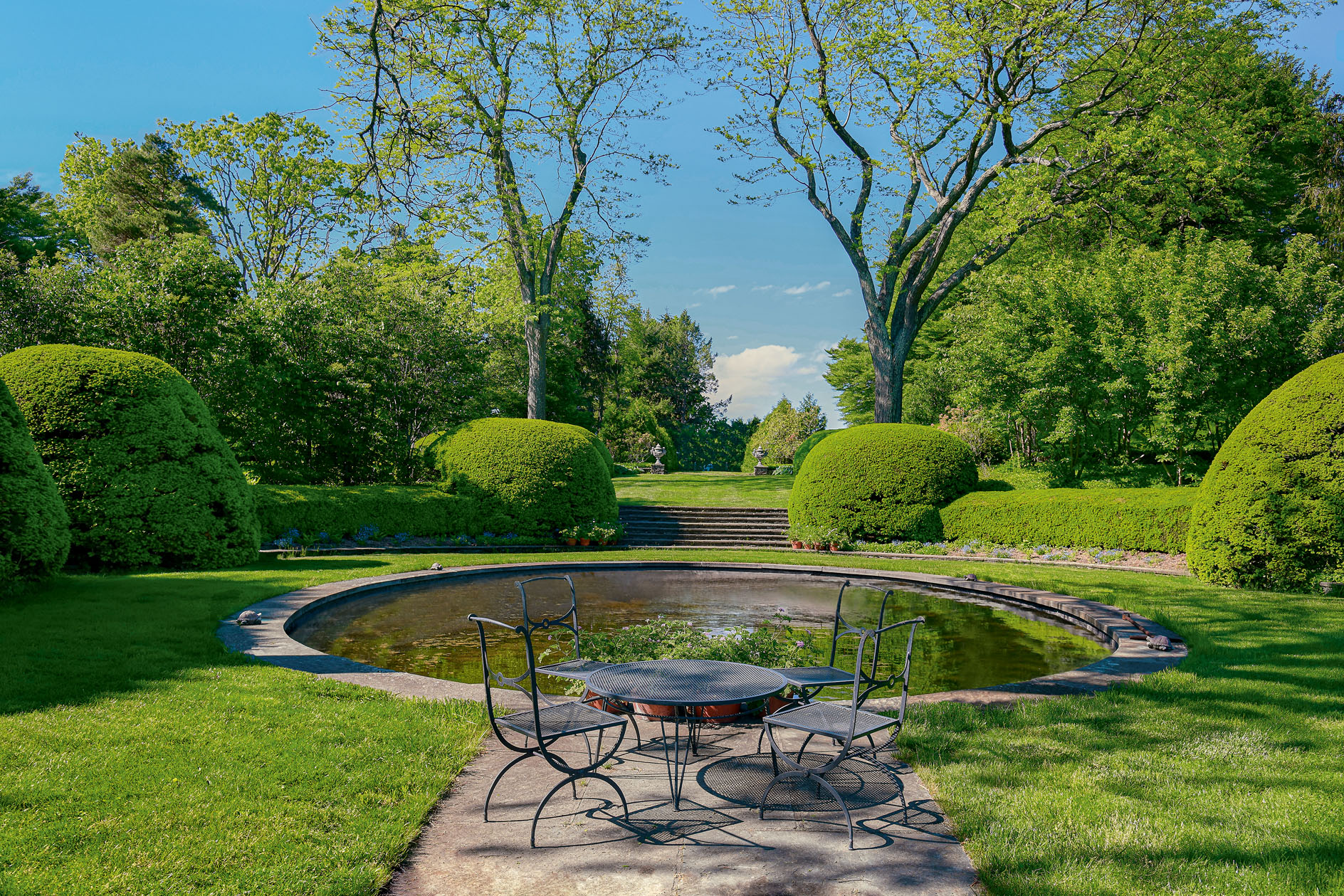
Once the formal garden was essentially completed, work began on Poehler’s idea for a seven-acre Wilderness Walk to the south-west of the house. Modelled on the bosci of the Italian Renaissance and intended as an allegorical journey, its meandering paths are lined with mountain laurels, rhododendrons and ferns and punctuated with limestone and marble statuary inspired by classical mythology.Stillman had trained as an architect and, although he never practised, he was engaged in every decision. Correspondence between him and his designer is preserved in the Wethersfield archive and is curiously formal.
For almost 40 years, they addressed each other as ‘Dear Mrs Poehler’ and ‘Dear Mr Stillman’ and their letters cover everything from discussion of soil, placement of trees, subject matter of statuary, choice of sculptors, colour of peastone, and even Stillman’s plaintive requests for more roses. On this point, Poehler finally relented: ‘You have pleaded for years for old-fashioned roses but I could never find a suitable location. Now I’ll have to do something except procrastination.’
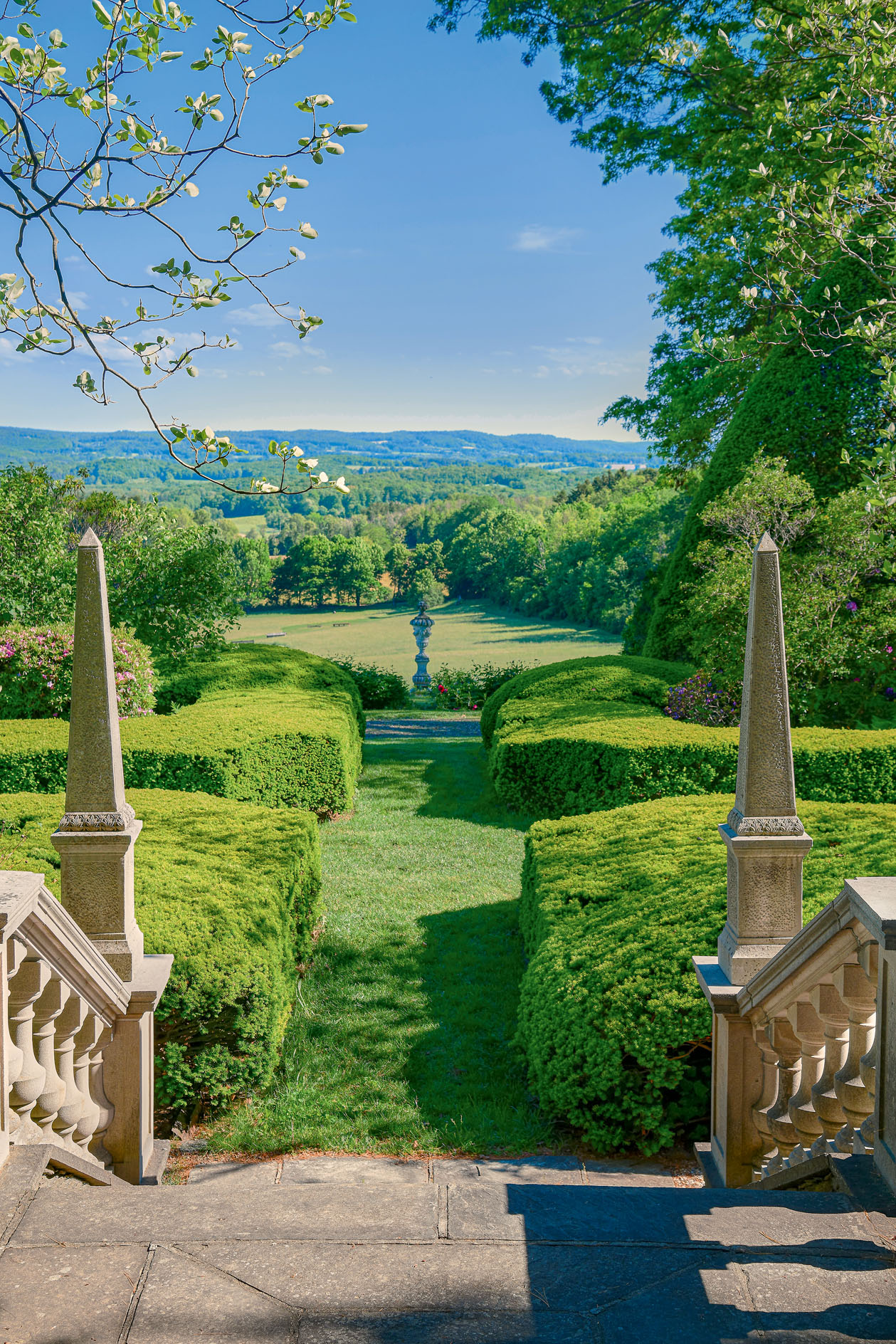
Stillman divided his time between New York and Wethersfield. He collected art, enjoyed needlepoint and read Greek. After becoming a Catholic in 1952, his interests were increasingly drawn to classicism — even bringing Pietro Annigoni from Italy to paint frescos for the walls and ceiling of a Palladian-style art gallery, a later addition to the house. Contemporaries recall a kind and intensely private man — a conservative Catholic who preferred Opus Dei retreats to large social gatherings and who, as one gardener remembers, wore an Edwardian one-piece bathing suit for swimming.
However, when it came to land management and farming practices, there was nothing conservative about Stillman’s thinking. He built 12 ponds to improve irrigation, practised crop rotation, banned the use of herbicides and constantly reforested his property. Littering of any kind was not tolerated, causing his secretary to remark in 1971 that ‘Mr Stilman [is] on his annual rampage about litter’.
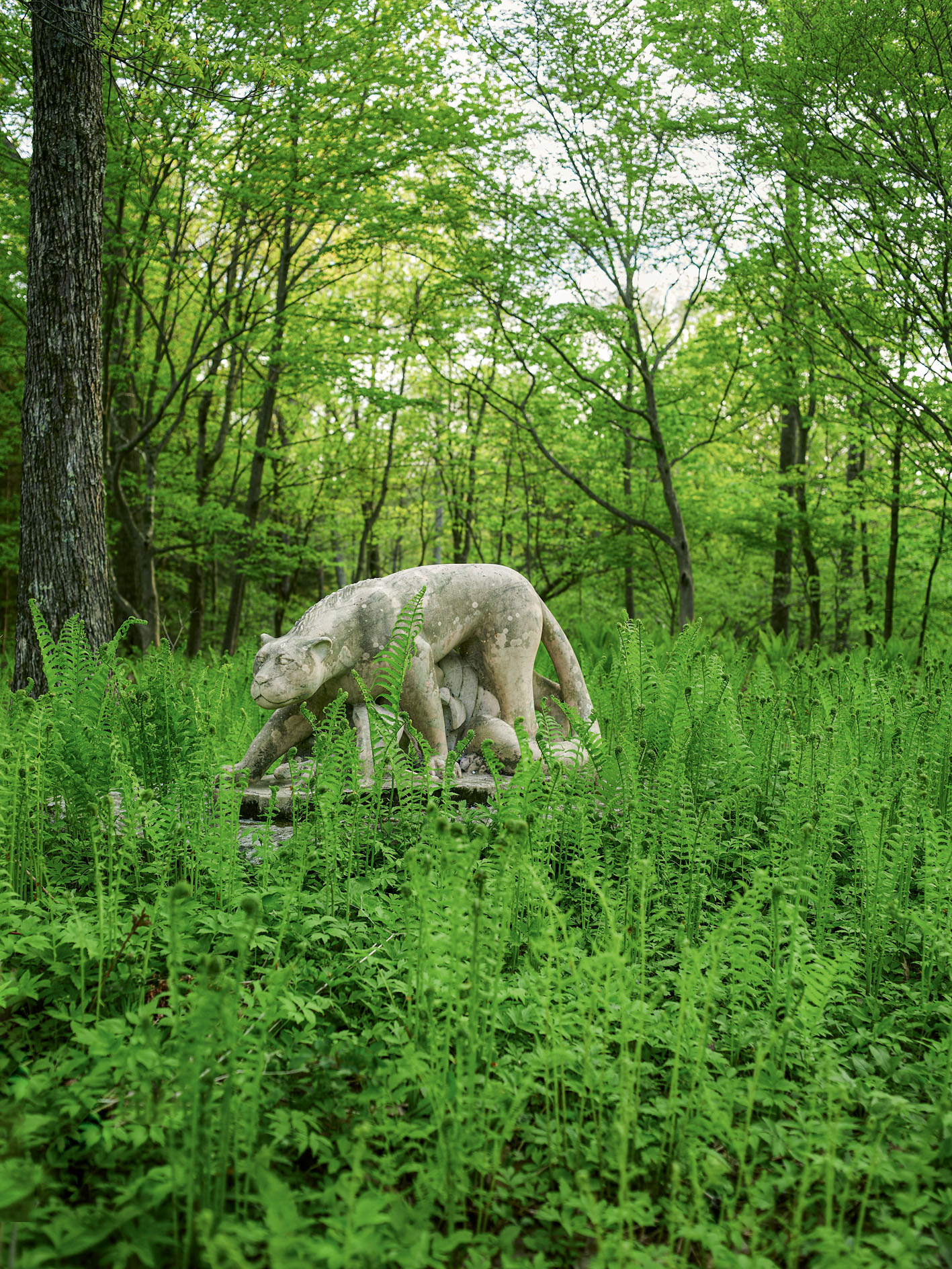
In later life, he became a passionate collector and restorer of vintage carriages that were drawn by a team of Hackneys, raised, trained and imported from England. He also developed more than 20 miles of carriage trails on his property and vehicles were prohibited unless absolutely necessary, with written reprimands sent to any member of staff who broke this rule.
Stillman saw the garden as his legacy and, before he died, had set up the Homeland Foundation primarily to care for its preservation. He left instructions that it be partially funded by the sale of his most valuable painting, Portrait of a Halberdier by Pontormo, and, after he died, in 1989, the painting was sold at auction to the Getty Museum for $35 million. However, the assets of the Homeland Foundation ($103 million in 1998) had dwindled to $31 million within 17 years — a sorry tale of overspending and misappropriation of funds by the trustees.
In 2015, the New York State attorney general intervened, disbanding the Homeland Foundation and transferring its decimated assets to the Wethersfield Foundation — a new entity with a board that included strong family representation. To help raise needed funds for the upkeep of Wethersfield, the new trustees were forced to sell almost all of Stillman’s remaining art collection. ‘I am very sad because I know how much these paintings meant to my father,’ said Theodora S. Budnik, one of Stillman’s daughters. ‘But the survival of Wethersfield is more important.’
Today, the foundation is restoring the garden to its former condition. The newly appointed director of horticulture, Toshi Yano, is working with a team of four gardeners to improve the planting, preserve the trees and repair the hard landscape. All is supported by funds raised by the Friends of Wethersfield, who are also co-ordinating public and cultural events.
Wethersfield, generally agreed to be the finest example of a classically inspired 20th-century American garden, is back in good hands, something that would surely please Mr Stillman and Mrs Poehler.
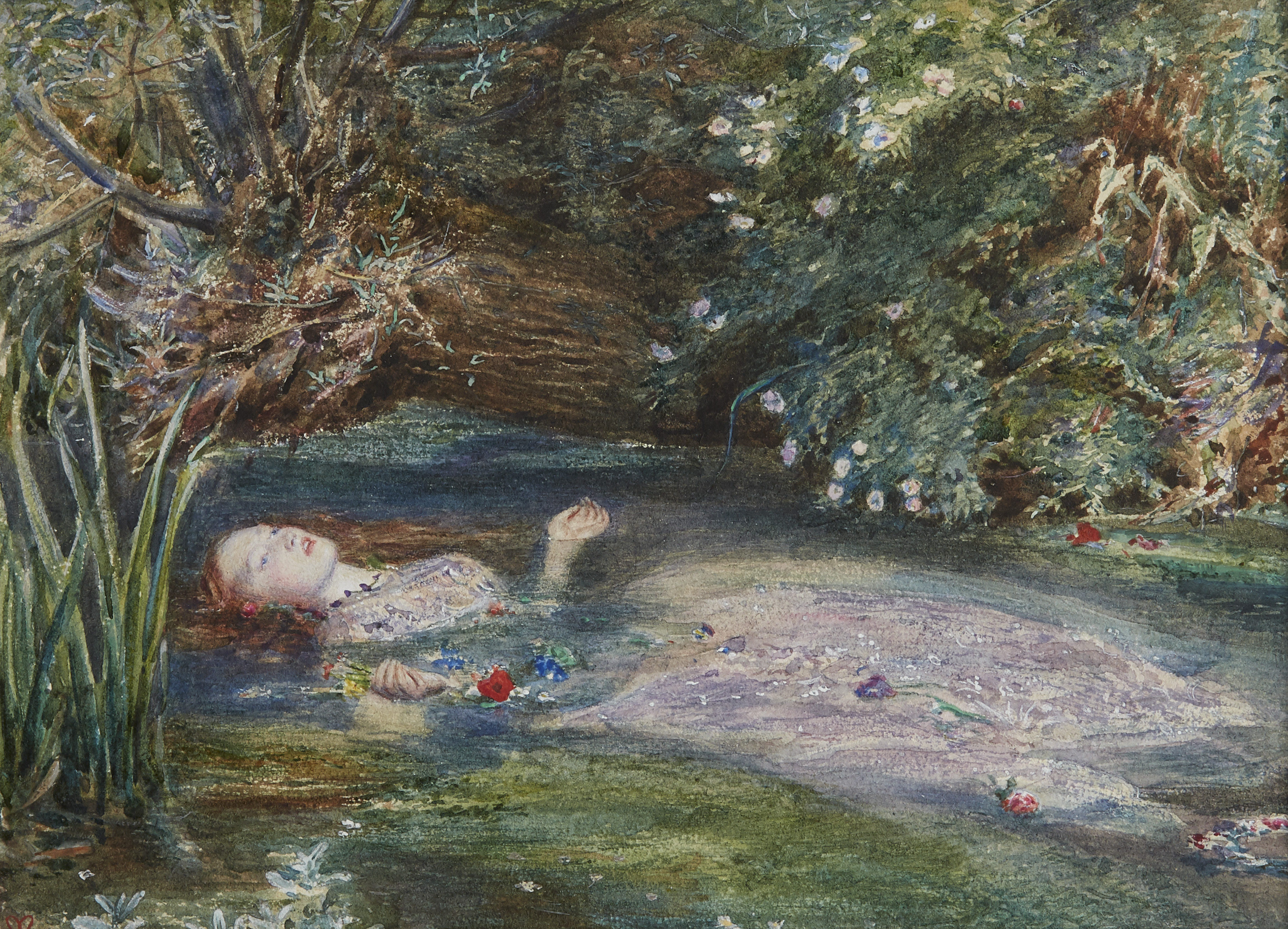
In Focus: The Pre-Raphaelite sisters who fought for recognition in the shadow of the Brotherhood
Caroline Bugler admires the National Portrait Gallery's new exhibition, 'The Pre-Raphaelite Sisters', which reveals the creative role of women in
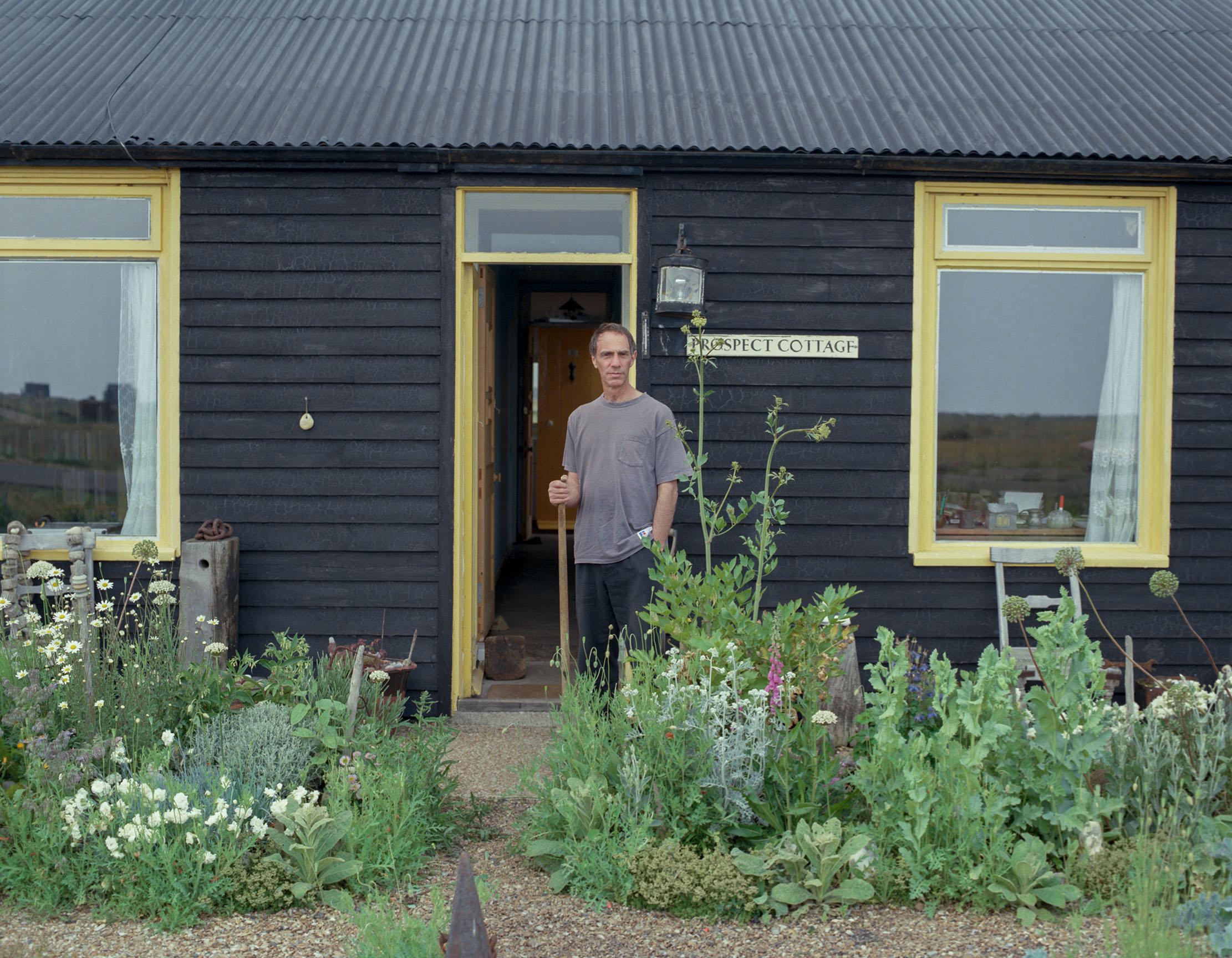
£3.5 million campaign launched to save Derek Jarman's iconic Prospect Cottage for the nation
Art Fund is running a campaign to save Prospect Cottage, the former home of film director Derek Jarman, which has
Country Life is unlike any other magazine: the only glossy weekly on the newsstand and the only magazine that has been guest-edited by HRH The King not once, but twice. It is a celebration of modern rural life and all its diverse joys and pleasures — that was first published in Queen Victoria's Diamond Jubilee year. Our eclectic mixture of witty and informative content — from the most up-to-date property news and commentary and a coveted glimpse inside some of the UK's best houses and gardens, to gardening, the arts and interior design, written by experts in their field — still cannot be found in print or online, anywhere else.
-
 The King's favourite tea, conclave and spring flowers: Country Life Quiz of the Day, April 22, 2025
The King's favourite tea, conclave and spring flowers: Country Life Quiz of the Day, April 22, 2025Tuesday's Quiz of the Day blows smoke, tells the time and more.
By Toby Keel
-
 London is the place for me* (*the discerning property buyer)
London is the place for me* (*the discerning property buyer)With more buyers looking at London than anywhere else, is the 'race for space' finally over?
By Annabel Dixon